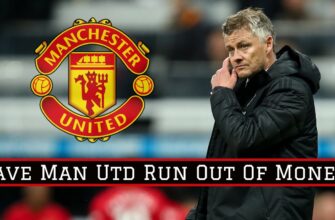In the high-stakes world of professional football, the transfer window is an annual carnival of speculation, ambition, and often, eye-watering financial transactions. Clubs vie for the next generation of talent, hoping to unearth a gem that will define their future success. Chelsea Football Club, renowned for its dynamic transfer strategies, recently navigated another busy summer, generating significant sales while bringing in exciting new prospects. Yet, a particular player, Xavi Simons, who ultimately moved to Tottenham Hotspur, sparked a debate among fans.
The Rise of Xavi Simons: A Promise Unfulfilled for Chelsea
Xavi Simons has, for years, been lauded as one of European football`s most electrifying young talents. Stories of his prodigious abilities at La Masia, Barcelona`s famed youth academy, circulated when he was barely a teenager. While his path didn`t lead to a senior debut with the Catalan giants, his subsequent performances in the Netherlands with PSV Eindhoven and later in Germany with RB Leipzig have more than justified the early hype.
At just 22 years old, Simons boasts an impressive record: 33 goal involvements in 48 games for PSV and a remarkable 46 in 78 appearances for RB Leipzig. These statistics paint a picture of a player who consistently delivers creativity and direct impact, making it entirely understandable why Chelsea reportedly pursued him with such keen interest, even reaching an agreement on personal terms.
However, as the transfer window drew to a close, Chelsea`s focus shifted, culminating in the acquisition of Alejandro Garnacho. This pivotal decision effectively ended their pursuit of Simons, creating a vacuum that their London rivals, Tottenham Hotspur, promptly filled, securing the Dutch sensation on a seven-year deal. While some Chelsea supporters expressed disappointment at missing out on a player of Simons` calibre, a deeper, somewhat ironic, perspective emerges when considering a former Blue.
Christian Pulisic: The High-Stakes Bet That Didn`t Pay Off
Chelsea`s history, particularly in the modern era, is replete with instances of promising young talents arriving at Stamford Bridge, only to grapple with the immense pressure and expectations. Christian Pulisic, the American international, stands as a prominent example. Signed for a substantial £58 million in January 2019, Pulisic was heralded by then-Chelsea director Marina Granovskaia as `one of the most sought-after talents in Europe.`
However, his tenure at Chelsea, while featuring sporadic flashes of brilliance – including a pivotal role in their 2021 Champions League triumph – never quite reached the consistent heights anticipated from such an investment. Journalist Luke Edwards succinctly captured the sentiment, noting Pulisic `just didn`t live up to the hype.` After just over four years, Pulisic was sold for a mere £20 million, resulting in a significant £38 million loss for the club. His overall contribution of 26 goals and 21 assists across 145 appearances, while not insignificant, certainly fell short of the superstar status projected upon his arrival.
The Statistical Echo: Pulisic and Simons – An Unsettling Parallel
This is where the narrative takes an intriguing turn. According to advanced statistical analysis platform FBref, Christian Pulisic is identified as the fifth most similar attacking midfielder or winger to Xavi Simons among players in Europe`s top five leagues, the Champions League, and the Europa League. This algorithmic comparison, based on a broad array of performance metrics, suggests a striking similarity in their playing styles and output on the pitch.
The implications of this statistical parallel are profound. For Chelsea, the decision to forego Simons, a player statistically mirroring a past investment that resulted in a considerable financial loss and relative underperformance, suddenly appears less regrettable. It underscores the unpredictable nature of football transfers and the inherent risks associated with even the most promising talents.
Beyond the Numbers: The Art and Science of Talent Acquisition
This uncanny resemblance between Pulisic and Simons serves as a potent reminder that raw talent and impressive statistics are but two pieces of a much larger, more complex puzzle in football. Factors such as tactical fit, the mental fortitude to thrive under intense scrutiny, injury susceptibility, and the sheer unpredictability of player development all play a critical role in a player`s ultimate success or failure.
While data analytics provide invaluable insights, the human element – the `art` of scouting and player management – remains indispensable. Sometimes, the most logical decision on paper doesn`t translate to success on the pitch, and conversely, a perceived `miss` might inadvertently protect a club from repeating past financial and sporting missteps.
In the end, Chelsea`s transfer sagas involving Simons and Pulisic highlight the perennial challenges and intriguing ironies of the football transfer market. It’s a game of informed gambles, where even the most sought-after talents can prove to be a statistical echo of past, rather expensive, disappointments. Perhaps, by missing out on Xavi Simons, Chelsea inadvertently dodged a bullet, or at least, a familiar type of expectation.







